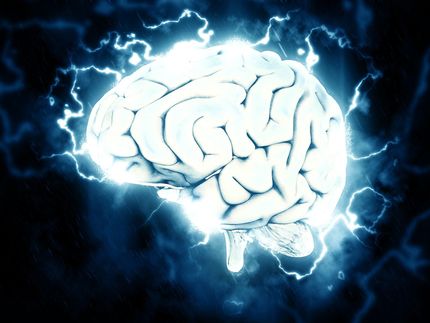Peripheral Induction of Alzheimer-Like Brain Pathology in Mice
Pathological protein deposits linked to Alzheimer's disease and cerebral amyloid angiopathy can be triggered not only by the administration of pathogenic misfolded protein fragments directly into the brain but also by peripheral administration outside the brain. This is shown in a new study done by researchers at the Hertie Institute of Clinical Brain Research (HIH, University Hospital Tübingen, University of Tübingen) and the German Center for Neurodegenerative diseases (DZNE).
Alzheimer’s disease and a brain vascular disorder called cerebral beta-amyloid angiopathy are characterized by the accumulation of a protein fragment known as Abeta. In Alzheimer´s disease, misfolded Abeta is deposited mainly in so-called amyloid plaques, whereas in cerebral beta-amyloid angiopathy, the Abeta protein aggregates in the walls of blood vessels, interfering with their function and, in some cases, causing them to rupture with subsequent intracerebral bleeding.
In 2006, scientists in Tübingen, led by Mathias Jucker, reported that injection of dilute extracts from Alzheimer's disease brain tissue, or from Abeta-laden mouse brain tissue, into the brains of transgenic mice (genetically modified to produce the human form of Abeta) stimulated Abeta aggregation within the mouse brain (Science 313: 1781-4, 2006).
In the current Science study, Professor Jucker and first author Yvonne Eisele, together with their research team (HIH, University of Tübingen, DZNE) and colleagues Matthias Staufenbiel (Novartis), Mathias Heikenwälder (University of Zürich), and Lary Walker (Emory University Atlanta) report that Abeta deposition can be induced in the transgenic mouse brain by the intraperitoneal administration of mouse brain extract containing misfolded Abeta. This induced Abeta deposition was primarily associated with the vasculature, but was also evident as amyloid plaques between nerve cells. The time needed to induce amyloid deposition in the brain was much longer for peripheral as compared to direct brain administration. In both cases, the induced amyloid deposition also triggered several neurodegenerative and neuroinflammatory changes commonly observed in the brains of patients with Alzheimer´s disease and cerebral beta-amyloid angiopathy. “The finding that mechanisms exist allowing for the transport of Abeta aggregates from the periphery to the brain raises the question of whether protein aggregation and propagation, which may also be involved in other neurodegenerative brain diseases, can be induced by agents originating in the periphery“, points out Professor Jucker. The present findings provide new clues on pathogenetic mechanisms underlying Alzheimer’s disease; further investigation will likely lead to new strategies for prevention and treatment.
While this molecular principle of induced protein aggregation bears similarities to that of prion diseases, the latter, which include bovine spongiform encephalopathy (BSE), can also be initiated by introducing prions at sites peripheral to the brain. The present study shows that this is not a characteristic unique to prion diseases, as has been assumed so far. Despite this remarkable observation and the apparent mechanistic similarities between Alzheimer´s and prion diseases, there is no evidence that Alzheimer's disease or cerebral amyloid angiopathy is transmitted between mammals or humans in the same manner as prion diseases.
Original publication: Yvonne S. Eisele et al.; "Peripherally Applied Ab-Containing Inoculates Induce Cerebral b-Amyloidosis"; Science, Advanced online publication, 21 October 2010
Most read news
Topics
Organizations
Other news from the department science

Get the life science industry in your inbox
By submitting this form you agree that LUMITOS AG will send you the newsletter(s) selected above by email. Your data will not be passed on to third parties. Your data will be stored and processed in accordance with our data protection regulations. LUMITOS may contact you by email for the purpose of advertising or market and opinion surveys. You can revoke your consent at any time without giving reasons to LUMITOS AG, Ernst-Augustin-Str. 2, 12489 Berlin, Germany or by e-mail at revoke@lumitos.com with effect for the future. In addition, each email contains a link to unsubscribe from the corresponding newsletter.





















































